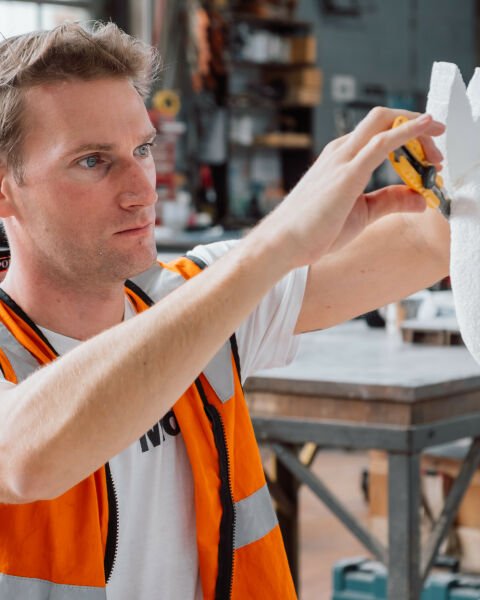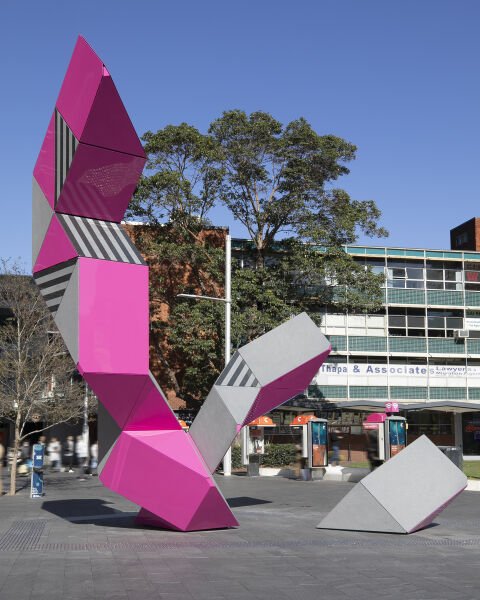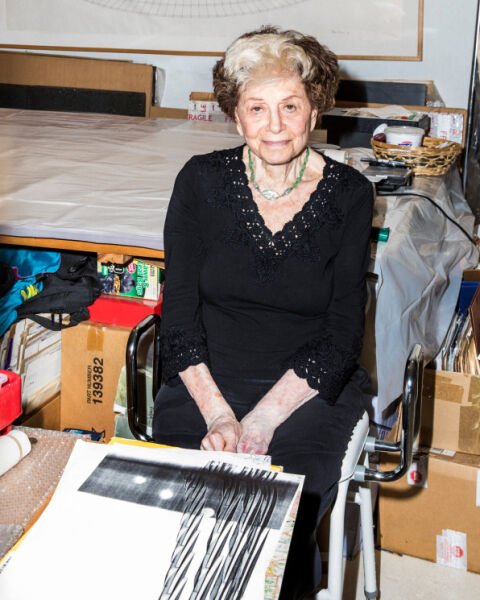The Art of Preservation
Introducing the team behind UAP's Preservation, Conservation, and Restoration business

The history of art restoration spans centuries, driven by the objective to guarantee valuable works of art remain well-preserved and accessible. With earliest examples dating back to 2500 BC, bronze sculpture preservation and care are essential for owning these pieces, and this goes with all other types of metal sculptures in the public realm or private collections. Since technological advances have led to increasingly reliable, effective, and sustainable approaches to preserving and repairing a range of artworks. Art preservation and restoration have become increasingly important as it is intended to protect an original artwork's integrity and, thus, its value.
We connected with our Preservation team, Sylvia Jeffries (Preservation and Special Projects) and Phil Castore (Restoration), to learn more about them, their focus areas, and their visions for this new and improved offering at UAP.

Preservation at UAP team (L-R): Sylvia Jeffries, Phil Castore, and Nick Bell
Gilbert Guaring (GG): To begin with, can you tell us how you both end up in this specific area of focus?
Sylvia Jeffries (SJ): I started my career moving to the United States from Australia to work for the artist Jeff Koons, developing industrial coatings for his painted metal sculptures in the Chelsea studio. Following my time there, I worked with other sculpture finishing fabrication studios. I had the chance to deliver works for other artists like Urs Fischer, Dan Colen, Anish Kapoor, the Estate of Sol Lewitt, and the Guggenheim Abu Dhabi, among many others. During this time, I was also introduced to the world of conservation through working with conservators on a restoration of a significant Murakami fiberglass sculpture. This exposure led me to return to school and further hone my craft at Modern Art Conservation, a private practice conservation studio in NYC, over the last five and a half years.
Phil Castore (PC): I have studied numerous fields such as Fine Art, Anaplastology, Prosthetic Rehabilitation, and Business Management. Having all these interests has led me to manage two businesses; the first is a fine art restoration business for more than three decades, and the second is a prosthetic manufacturing business.
My restoration business has given me experience working with many diverse materials and mediums. Whether working in wood, marble, metal, or exotic material like goat skin or tortoiseshell, these different projects have allowed me to understand each material and its properties. This helped me transition into my prosthetic business, where I learned about a new material, Silicon. Creating silicon hyper-realistic body parts was not only artistically and technically challenging but also placed me in a health care environment. There I observed how important it is to have art and design incorporated into the environment to aid in mind and body healing. In addition, working with fellow artists within the prosthetic company allowed us to share and create an artistic environment for our patients, and I always enjoyed my patients' responses to the artworks around my lab.
The restoration business makes artworks whole again. The prosthetic business makes people whole again. Both companies use artistic techniques as a vehicle to reclaim something that has been lost.
GG: What do you like about art preservation, conservation, and maintenance?
SJ: I like that it's never the same, and I feel fortunate that I get to meet and engage with a diverse range of people involved in very different areas of the art world. It's wonderful to build relationships through the life-cycle of an artwork – the owners and collectors, the artists, the makers, the gallery staff, and curators involved in the exhibition and care of these pieces.
PC: Sharing my life and work experiences with all the great talent at the workshop is rewarding. Discussing a project with different people with various opinions is interesting, and always finding common ground is the strength of craftsmanship.
GG: What's your typical workday look like?
SJ: A good mix of putting out fires, helping people through research-driven material problem solving, and looking at or examining artworks. My favorite thing about being a conservator is the broad range of tasks we have to bounce between on any given day, from focused research on an artwork, examining pieces in person, and meeting with artists, collectors, curators, and fabricators.
PC: After making a strong cup of tea, I begin the process of reviewing the tasks that need my immediate attention for the day. This consists of communicating with clients, estimating a project, writing proposals, checking my on sight schedule, researching and ordering materials, mentoring, going to sites to perform treatment plans, and working with the administration department for billing purposes.
GG: Who are your biggest influences?
SJ: My biggest influences in conservation include Carol Mancusi-Ungaro, Chief Conservator from the Whitney, for her ability to rethink the department relative to the changing needs of conservation for contemporary art in initiatives such as the Replication Committee, Francesca Esmay from the Guggenheim for her insightful work with the Panza Collection, and Caitilin Murray at the Judd Foundation.
PC: I am a big fan of the Bugatti Family. Father Carlo's sons Ettore and Rembrandt. All incredibly ahead of their time.
GG: Any memorable experience you want to share and what you have learned from it?
SJ: My most memorable experiences have been meeting with some of my favorite artists, from Charlie Ray to Jeff Koons, Mika Tajima, and Peter Halley. Being able to access new insights into the artists' motivation in developing their work is an incredible perk of the job.
PC: When I started working in the foundry industry, I was asked to patina the Vietnam Memorial Three Soldiers by Sculptor Fredrick Hart. I wanted to apply a polychrome patina to the sculpture because I felt a monochromatic patina wouldn't do justice to the fluidity of the gestures the soldiers were presenting. I was met with a lot of apprehension from the client. When they heard it was going to be "many colors," they feared that each soldier's ethnicity would be highlighted too much. After much discussion and many samples, I presented them with the patinas I thought would be appropriate. The warm neutral skin tone and a realistic color uniform would enhance the already realistic sculpture the sculptor created. The artist and the committee were delighted with the outcome, and it is the first polychrome patina on a national monument still on display in Washington DC. I realized through that experience that, as artisans, we are responsible for honoring our craft and enlightening others about what may be possible so they can make informed decisions to realize their work better.
GG: Which current trend (whether in the arts or specific to Preservation) are you following?
SJ: I'm very excited to see higher levels of representation being actively promoted in the art world, after a long history of being a relatively closed and prohibitive space for many communities. I'm excited to see how this will unfold and how it will have on the development of future art movements and the ongoing work of young artists.
PC: I am really keen to observe, understand and better manage the destruction of public monuments through acts of vandalism.
GG: What gives you the most joy?
SJ: Continuing to engage with thought-provoking and emotionally resonant artwork on an intimate level, along with the more simple pleasures of home-cooked meals with fresh produce, swimming in the ocean, and a good game of tennis at the height of summer!
PC: Knowing my family and friends are safe.
Whether damaged accidentally, willfully, or inevitably through time, art preservation and restoration continues to evolve, and the techniques used to preserve public art and other sculptures and address condition issues are constantly changing to maintain the historical significance of the world's most influential works.
We would love to hear your vision and objectives, what you are looking to achieve, and how our team can add value to your preservation, conservation, and restoration project.
#Related Articles

Contemporary Art, Material Exploration and Transformations
A Look at Tom Keukenmeester's Residency at our Brisbane Workshop

First Nations artwork honouring the eel launched in Parramatta Square
Created by Kamilaroi artist, Reko Rennie, the 7.5-metre tall sculpture depicts two eels rising from the ground and crossing each other as they play.




